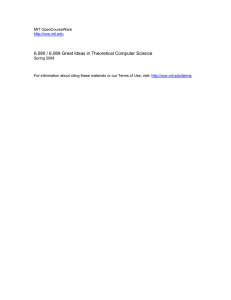6.080 / 6.089 Great Ideas in Theoretical Computer Science
advertisement
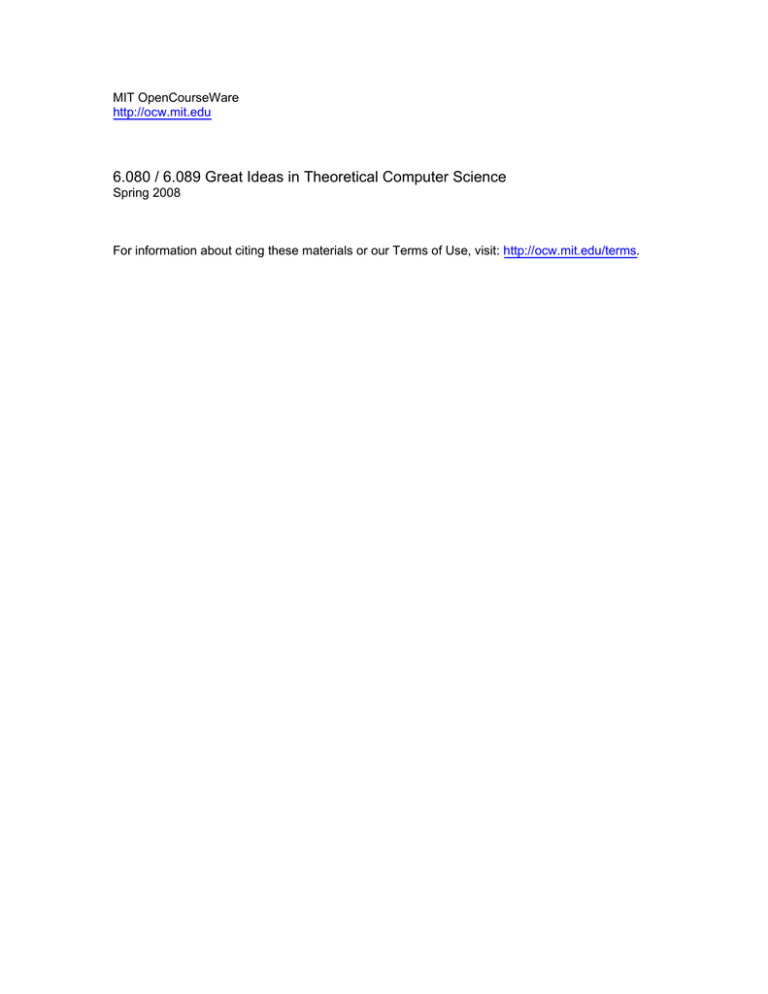
MIT OpenCourseWare
http://ocw.mit.edu
6.080 / 6.089 Great Ideas in Theoretical Computer Science
Spring 2008
For information about citing these materials or our Terms of Use, visit: http://ocw.mit.edu/terms.
6.080/6.089 Problem Set 2
Assigned: Thursday, Feb. 28, 2008 / Due: Thursday, March 13, 2008
1. In 1962, Tibor Rado defined S (n), or the nth “Busy Beaver shift number,” to be the maximum number
of steps made by any n-state Turing machine that eventually halts. Here a Turing machine has a
two-way infinite tape with either 0 or 1 on each square, and all tape squares are initially set to 0. A
“step” consists of writing a 0 or 1 to the current square, moving either left or right by one square, and
either transitioning to a new state or halting (with all of these decisions determined by the current
state together with the symbol on the current square).
(a) Show that S (1) = 1.
(b) Show that S (2) ≥ 6. [Hint: Try various 2-state Turing machines until you find one that runs for
6 steps before halting.]
(c) Show that S (n) grows faster than any computable function. In other words, there is no com­
putable function C such that C (n) ≥ S (n) for all n.
(d) Show that there is not even a computable function C such that C (n) ≥ S (n) for infinitely many
n.
∗
2. Given a set of strings L ⊆ {0, 1} , we say L is computable if there exists a Turing machine that, given
as input a string x, decides whether x ∈ L. We say L is c.e. (for “computably enumerable”) if there
exists a Turing machine M that, when started on a blank tape, lists all and only the strings in L. (Of
course, if L is infinite, then M will take an infinite amount of time.)
(a) Let HALT be the set of all Turing machines that halt when started on a blank tape. (Here each
Turing machine is encoded as a binary string in some reasonable way.) Show that HALT is c.e.
[Note: In this and the following problems, you do not need to construct any Turing machines;
just give a convincing argument.]
(b) Let L be any c.e. set. Show that L is computable given an oracle that, for any string x, decides
whether x ∈ HALT .
(c) Show that a set L is computable if and only if L and L are both c.e. (Here L is the complement
∗
of L: that is, the set of all x ∈ {0, 1} such that x ∈
/ L.)
3. Given a formal system F , recall that Con (F ) is a mathematical encoding of the claim that F is
consistent: in other words, that F never proves both that a statement is true and that it’s false.
Consider the “self-hating system” F +� Con (F ): that is, F plus the assertion of its own inconsistency.
Show that if F is consistent, then F +� Con (F ) is an example of a formal system that is consistent but
not sound. [Note: You can assume the Incompleteness Theorem.]
4. Let a XOR-circuit of size n be a circuit built entirely out of two-input XOR gates, which maps n input
bits to n output bits. Also, call two circuits equivalent if they produce the same output whenever
they’re given the same input.
(a) Show that, for every XOR-circuit of size n, there’s an equivalent XOR-circuit with at most
n (n − 1) gates.
(b) Show that
for every
�
� n, there’s some XOR-circuit of size n such that every equivalent XOR-circuit
has Ω n2 / log n gates.
5. Suppose a Turing machine M has s internal states, and visits at most n different tape squares. Prove
an upper bound (in terms of n and s) on the number of steps until M halts (assuming it does halt).
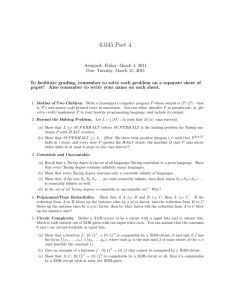



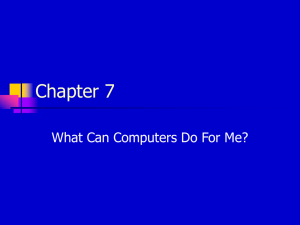

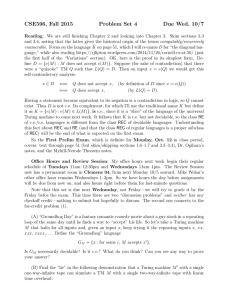

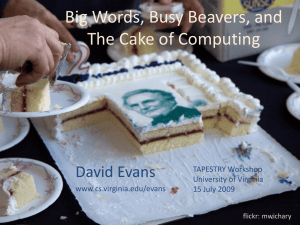
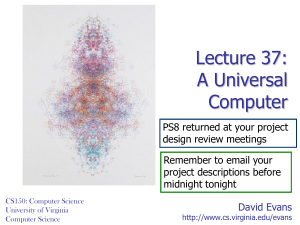
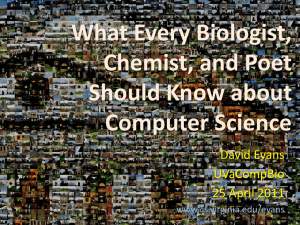
![Theory (pptx) [updated]](http://s2.studylib.net/store/data/015416460_1-8bc63bc3842cb1776f3ee9f2acf2db4e-300x300.png)
